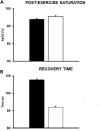Case report: Personalized adapted motor activity in a COVID-19 patient complicated by critical illness polyneuropathy and myopathy
- PMID: 36467693
- PMCID: PMC9713812
- DOI: 10.3389/fphys.2022.1035255
Case report: Personalized adapted motor activity in a COVID-19 patient complicated by critical illness polyneuropathy and myopathy
Abstract
Background: COVID-19 may require hospitalization in an intensive care unit (ICU) and is often associated with the onset of critical illness polyneuropathy (CIP) and critical illness myopathy (CIM). Due to the spread of the disease around the world, the identification of new rehabilitation strategies for patients facing this sequence of events is of increasing importance. Case presentation: We report the clinical presentation and the beneficial effects of a prolonged, supervised adapted motor activity (AMA) program in a highly deconditioned 61-year-old male COVID-19 patient discharged from the ICU and complicated by residual CIP and CIM. The program included aerobic, strength, gait, and balance training (1 h, 2 sessions per week). Measures: Pulmonary (spirometry), metabolic (indirect calorimetry and bioimpedance), and neuromuscular functions (electromyography) were evaluated at baseline and after 1 year of training. Results: Relative to baseline, an amelioration of several spirometric parameters such as vital capacity (VC, +40%), total lung capacity (TLC, +25%), and forced expiratory volume in 1 s (FEV1, +28%) was appreciable. Metabolic parameters such as body water (60%-46%), phase angle (3.6°-5.9°), and respiratory quotient (0.92-0.8) returned to the physiological range. Electromyographic parameters were substantially unchanged. The overall amelioration in clinical parameters resulted in a significant improvement of patient autonomy and the quality of life. Conclusion: Our results highlight the importance of AMA for counteracting respiratory, metabolic, and functional but not neuromuscular impairments in COVID-19 patients with residual CIM and CIP.
Keywords: AMA; CIM; CIP; case report; post-COVID-19.
Copyright © 2022 Crisafulli, Baroscelli, Grattarola, Tansini, Zampella and D’Antona.
Conflict of interest statement
The authors declare that the research was conducted in the absence of any commercial or financial relationships that could be construed as a potential conflict of interest.
Figures


References
-
- Araújo B. T. S., Barros A. E. V. R., Nunes D. T. X., Remígio de Aguiar M. I., Mastroianni V. W., de Souza J. A. F., et al. (2022). Effects of continuous aerobic training associated with resistance training on maximal and submaximal exercise tolerance, fatigue, and quality of life of patients post-COVID-19. Physiother. Res. Int., e1972. 10.1002/pri.1972 - DOI - PMC - PubMed
LinkOut - more resources
Full Text Sources

